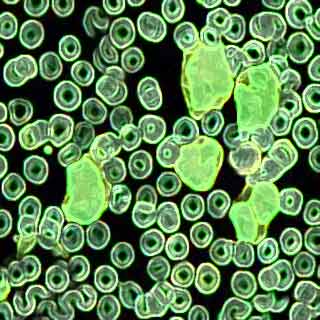Filiariasis
Filiariasis is a group of tropical diseases caused by thread-like parasitic round worms (nematodes) and their larvae. The larvae transmit the disease to humans through a mosquito bite. Filariasis is characterized by fever, chills,headache, and skin lesions in the early stages and, if untreated, can progress to include gross enlargement of the limbs and genitalia in a condition called elephantiasis. Approximately 170 million people in the tropical and subtropical areas of southeast Asia, South America, Africa, and the islands of thePacific are affected by this debilitating parasitic disease. Filariasis is occasionally found in the United States, especially among immigrants from the Caribbean and Pacific islands. While filariasis is rarely fatal, it is the second leading cause of permanent and long-term disability in the world. The World Health Organization (WHO) has named filariasis one of only six "potentially eradicable" infectious diseases. In all cases, a mosquito bites an infected individual then bites another uninfected individual, transferring some of the worm larvae to the new host. Once within the body, the larvae migrate to a particular part of the body and mature to adult worms. There are threetypes of filariasis: lymphatic filariasis affects the circulatory system that moves tissue fluid and immune cells (lymphatic system) and is the most common type, subcutaneous filariasis infects the areas beneath the skin and whites of the eye, and serous cavity filariasis infects body cavities but does not cause disease.
Lymphatic filariasis is caused by the adult worms living in the lymphatic vessels near the lymph nodes where they distort the vessels and cause local inflammation. In advanced stages, the worms can obstruct the vessels, causing thesurrounding tissue to become enlarged. In Bancroftian filariasis, the legs and genitals are most often involved, while the Malayan variety affects the legs below the knees. Repeated episodes of inflammation lead to blockages of the lymphatic system, especially in the genitals and legs. This causes the affected area to become grossly enlarged, with thickened, coarse skin, leading toa condition called elephantiasis. In conjunctiva filariasis, the worms' larvae migrate to the eye and can sometimes be seen moving beneath the skin or the white part of the eye (conjunctiva). If untreated, this disease can cause blindness. Symptoms vary, but filariasis usually begins with chills, headache,and fever between three months and one year after the insect bite. There mayalso be swelling, redness, and pain in the arms, legs, or scrotum. Areas ofpus (abscesses) may appear as a result of dying worms or a secondary bacterial infection. The disease is diagnosed by a patient history, a physical examination, and by screening blood specimens for proteins produced by the immune system in response to this infection. Early diagnosis may be difficultbecause, in the first stages, the disease mimics other bacterial skin infections.
Filariasis is treated with ivermectin, albendazole, or diethylcarbamazine toeliminate the larvae, impair the adult worms' ability to reproduce, and killadult worms. Much of the tissue damage may not be reversible. The medicationis started at low doses to prevent reactions caused by large numbers of dyingparasites. These medications can cause severe side effects in up to 70% of patients. These side effects can be controlled with antihistamines and anti-inflammatory drugs (corticosteroids). Rarely, treatment with diethylcarbamazinemay lead to a fatal inflammation of the brain (encephalitis). Other common drug reactions include dizziness, weakness, and nausea. Symptoms caused by thedeath of the parasites include fever, headache, muscle pain, abdominal pain,nausea and vomiting, weakness, dizziness, lethargy, and asthma. Reactions usually begin within two days of starting treatment and last between two and four days. No treatment can reverse elephantiasis. Surgery can remove surplus tissue, drain the fluid around the damaged lymphatic vessels, and ease massiveenlargement of the scrotum. Elephantiasis of the legs can also be helped byelevating the legs and using elastic bandages. The outlook is good in early or mild cases, especially if the patient can avoid being infected again. The disease is rarely fatal, and with continued WHO medical intervention, even gross elephantiasis is now becoming rare. The best way to prevent filariasis isto prevent being repeatedly bitten by the mosquitoes that carry the disease by: limiting outdoor activities at night, particularly in rural or jungle areas; wearing long sleeves and pants and avoiding dark-colored clothing that attracts mosquitoes; avoiding perfumes and colognes; treating clothing ahead oftime with permethrin (Duramon, Permanone); wearing DEET insect repellent, citronella or lemon eucalyptus to repel insects; if sleeping in an open area orin a room with poor screens, use a bed net to avoid being bitten while asleep; using air conditioning; and in highly infested areas, taking ivermectin preventatively. Scientists are working on a vaccine.










 10:48:00 AM
10:48:00 AM
 ourworld
ourworld





